
Janus Henderson: Euroland money trends steady
Monetary trends of Euroland have stabilised since early 2018. Country narrow money details show weakness in France, surprising resilience in Italy and growing strength in Greece.
02.08.2018 | 10:09 Uhr
The “surprise” weakening of Euroland economic growth in the first half of 2018 was foreshadowed by a monetary slowdown in late 2017. Monetary trends have stabilised since early 2018, suggesting that economic expansion will continue at around its recent pace through early 2019 – GDP may rise at a 1.25-1.5% annualised rate, below ECB and consensus forecasts of 1.75-2.0%. Country narrow money details show weakness in France, surprising resilience in Italy and growing strength in Greece.
As usual, the focus here is on non-financial monetary aggregates, comprising holdings of households and non-financial corporations (NFCs). Non-financial M1 and non-financial M3 rose by 0.3% and 0.4% respectively between May and June. Annual growth of non-financial M1 edged down to 7.3% but remained above a March low of 7.2%. Annual non-financial M3 growth rose to 4.0%, a five-month high and up from 3.4% in March – see first chart.
Six-month growth rates of the aggregates expressed in real terms (i.e. deflated by consumer prices) recovered further to their highest levels since November. They remain, however, lower than over 2015-17 and similar to 2013-14, when GDP growth was running at about 1.5% per annum* – second chart.
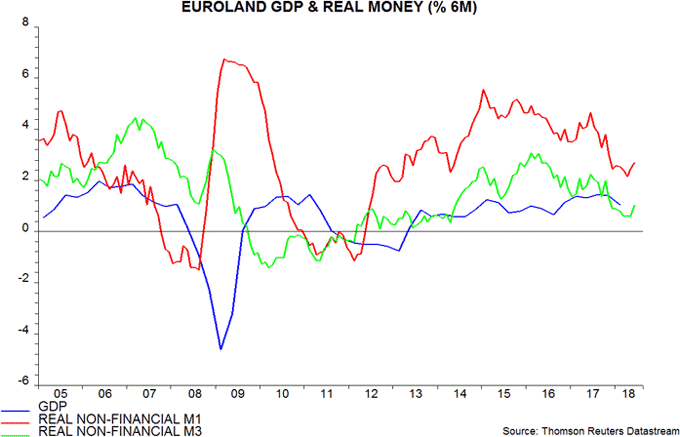
Country-level narrow money trends suggest a relatively pessimistic outlook for the French economy: six-month growth of real non-financial M1 deposits fell to a five-year low in June – third chart.
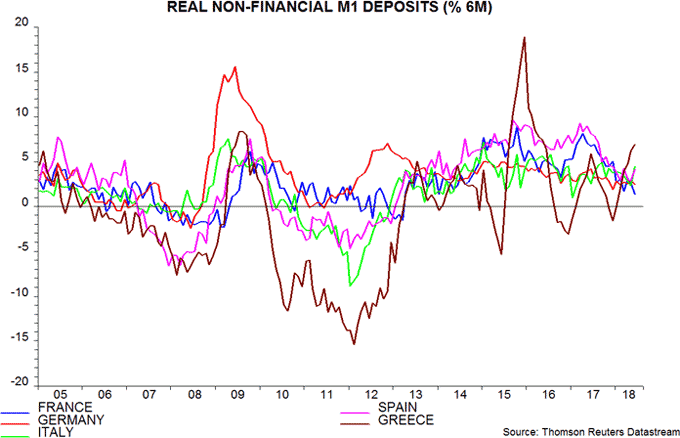
Recent weakness, moreover, reflects a stagnation in corporate real money holdings, which appears at odds with hopes that President Macron’s economic reforms would boost business confidence and expansion plans – fourth chart.
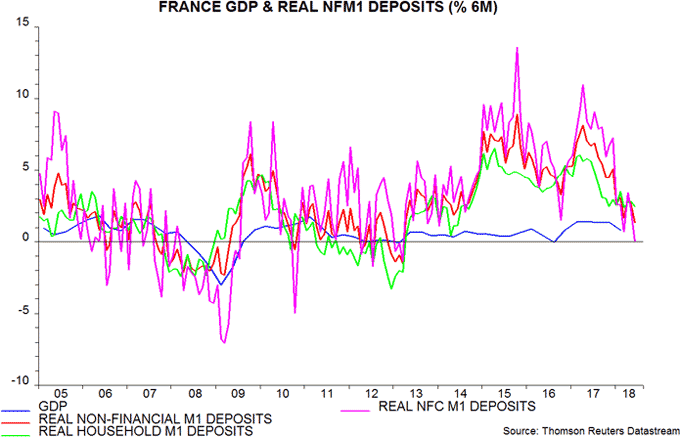
Growth of real non-financial M1 deposits in Italy, by contrast, rebounded strongly in June, suggesting that confidence and spending intentions are holding up despite the risk of a government / EU showdown over fiscal policy and an associated widening of the Italian / German yield spread.
Greek real non-financial M1 growth, meanwhile, reached its highest level since 2016, with corporate holdings surging – fifth chart. The strength in 2015-16 was artificial – it reflected a boost to overnight deposits from maturing time deposits but money was trapped in the banking system by cash withdrawal limits and capital controls. These have been relaxed significantly in 2018, while broad as well as narrow money has accelerated.
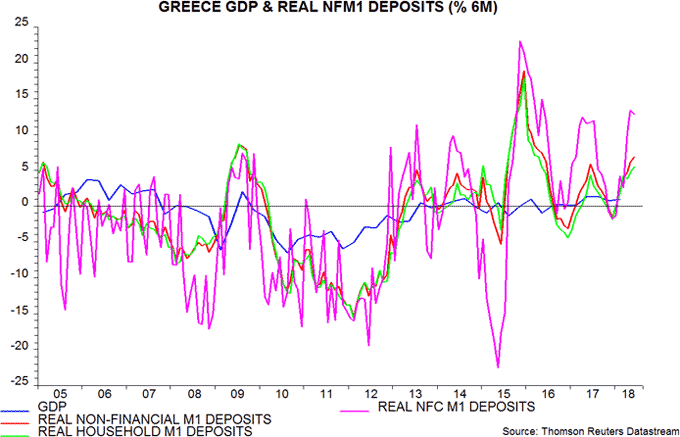
*Annualised rise of 1.4% between second quarter of 2013 and fourth quarter of 2014.




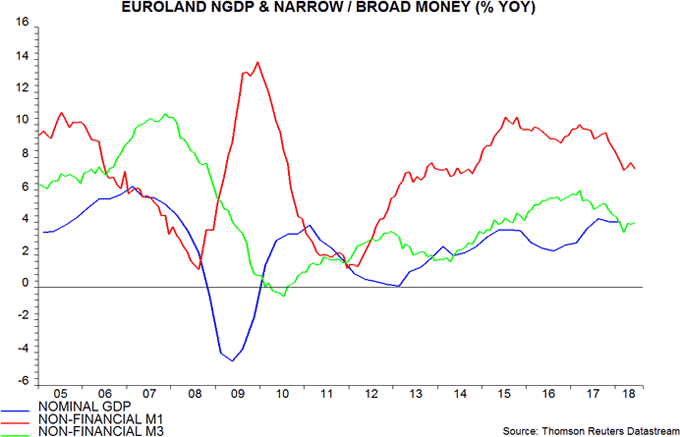
Diesen Beitrag teilen: